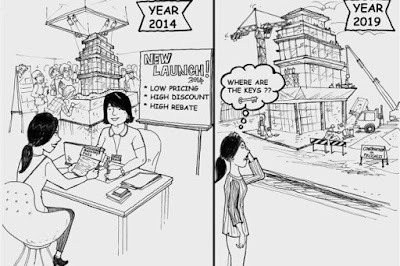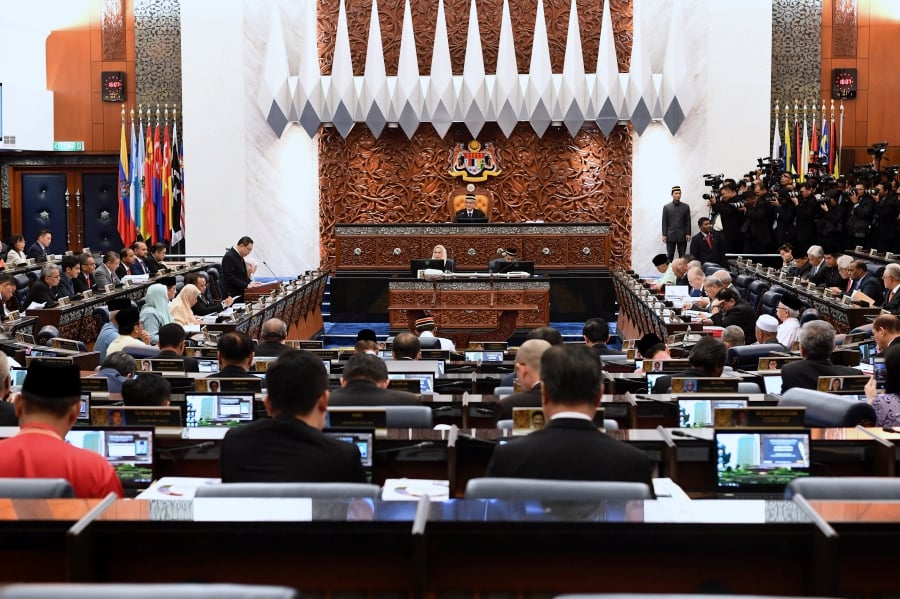A car used to be a symbol of freedom and ease of mobility. I could understand the dilemma of having to choose between a house and a car a decade ago.
Even then, we should still have chosen a car within our means to manage our financial position.
Today, with public transportation and the availability of ride-sharing services such as Grab Car, we can now really have the option of buying a house first. This gives us both shelter and value appreciation.
This choice has just been made easier with Budget 2019 and the recent announcement by the Finance Ministry.
The government has rolled out several measures to assist homebuyers, including stamp duty exemptions.
Homebuyers will get a stamp duty waiver for memorandum of transfer (MoT) for the purchase of houses priced up to RM1mil, during the six-month Home Ownership Campaign (HOC) from January to June 2019. In addition, the stamp duty on loan documentation is fully waived up to RM2.5mil.
Besides that, the Real Estate and Housing Developers Association (Rehda) has also agreed to cut the prices of its completed and incoming units by at least 10%.
When I talk to potential homebuyers, they always ask about the right time to own property.
There is no perfect time to buy a house on foresight. If the price is within your means, and you plan to buy it for own stay or as a long-term investment, then anytime is a good time.
However, with the property market at the bottom half of the cycle now, this could be a good time to commit to a house with the attractive tax incentives rolled out by the government.
Homebuyers can grab the “duty-free” opportunity now to explore the property market. Those living in the Klang Valley will be able to find their dream home during the Homeownership Campaign Expo at the KLCC Convention Centre from March 1-3.
The campaign is jointly organised by Rehda and the Housing and Local Government Ministry. Besides having all developers under one roof, the ministry will also be featuring homes under RM300,000 by PR1MA, SPNB, PNB and others.
The Homeownership Campaign was first held in 1998 to lessen the burden of homebuyers and to encourage homeownership. It is re-introduced after two decades now with the same objective.
For homebuyers who don’t like the risk of buying a house under construction, there are plenty of completed units for sale in the campaign.
Buying a house can be emotional and uncertain for many homebuyers. However, in the long run, we can rest assured that we are buying an asset that will appreciate.
For homebuyers, always buy within your means as you can upgrade your house in the later stage of your life.
In this auspicious Chinese New Year, I hope you decide to prioritise a new house over a new car. Gong Xi Fa Cai!
By Alan Tong . . . Food for Thought
Datuk Alan Tong has over 50 years of experience in property development. He was the World President of FIABCI International for 2005/2006 and awarded the Property Man of the Year 2010 at FIABCI Malaysia Property Award. He is also the group chairman of Bukit Kiara Properties. For feedback, please email bkp@bukitkiara.com
Related posts:
Good time to invest in property now
Leaving a legacy by buying a house first before a luxury car ...
Rich Gen-Y kids making their own success
Housing affordability is an income issue, what's with the fuss?
Penang property prices move sideways in Q1 2016
Penang properties: security for homeseekers, location for foreigners, increased value for investors
Malaysian property market correction to continue in 2016, its economic cycles the past 25 years
Too good to be true? Think twice
If it's too good to be true, something's wrong
When will the property market pick up?
Young adults in developed countries rent, we buy houses for good
Instead of blowing their cash on pricey gadgets, young Malaysians are saving up for their first home.











































 Potential house buyers checking out BinWan Development Sdn Bhd’s Gelugor Heights during StarProperty.my Fair in Queensbay Mall, Penang.
Potential house buyers checking out BinWan Development Sdn Bhd’s Gelugor Heights during StarProperty.my Fair in Queensbay Mall, Penang.



